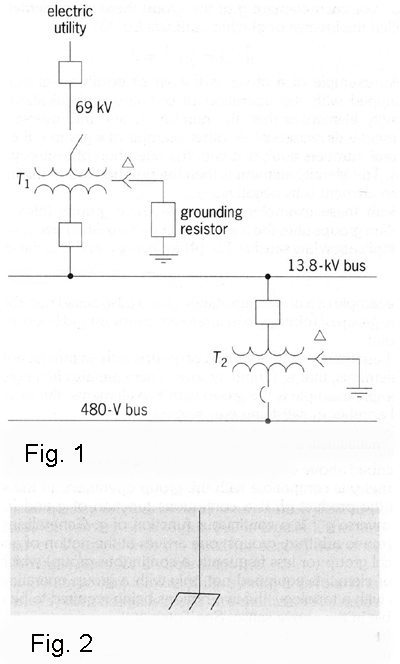AMAZON multi-meters discounts AMAZON oscilloscope discounts
Grounding intentional electrical connections to a reference conducting plane, which may be earth (hence the term ground), but which more generally consists of a specific array of interconnected electrical conductors, referred to as the grounding conductor. The symbol which denotes a connection to the grounding conductor is three parallel horizontal lines, each of the lower two being shorter than the one above it (Fig. 1). The electric system of an airplane or ship observes specific grounding practices with prescribed points of grounding, but no connection to earth is involved. A connection to such a reference grounding conductor which is independent of earth is denoted by use of the symbol shown in Fig. 2.

Fig. 1. Each conductively isolated portion of a distribution system requires
its ground.
Fig. 2. Symbol to denote connection to a reference ground that's independent
of earth.
The subject of grounding may be conveniently divided into two categories: system grounding and equipment grounding. System grounding relates to a grounding connection from the electric power system conductors for the purpose of securing superior performance qualities in the electrical system. Equipment grounding relates to a grounding connection from the various electric-machine frames, equipment housings, metal raceways containing energized electrical conductors, and closely adjacent conducting structures judged to be vulnerable to contact by an energized conductor. The purpose of such equipment grounding is to avoid environmental hazards such as electric shock to area occupants, fire ignition hazard to the building or contents, and sparking or arcing between building interior metallic members which may be in loose contact with one another. The design of outdoor open-type installations presents special problems.
Installations in which earth is used as a reference ground plane present special problems. To design an earth "floor surface" for an outdoor open-type substation which will be free of dangerous electric shock voltage exposure to persons around the station is a difficult task.
Related article: Grounding to Reduce EMI and Ground Loops